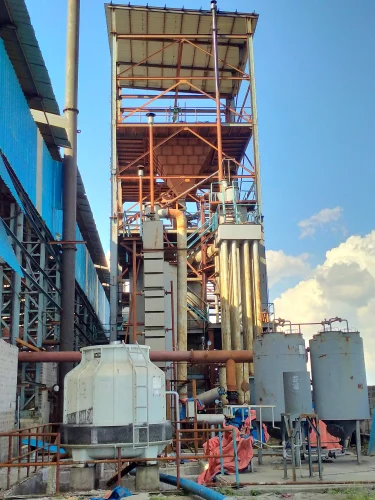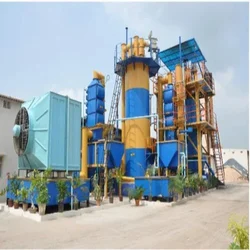In the dynamic landscape of energy production, the quest for sustainable and efficient alternatives is relentless. In this pursuit, one innovative contender has been gaining traction – Producer Gas. This article delves into the intricacies of Producer Gas and its transformative impact on redefining energy sources.
Contents
Understanding Producer Gas
Producer Gas, a synthesis gas composed primarily of carbon monoxide, hydrogen, and nitrogen, emerges as a byproduct of biomass gasification. This process involves converting solid biomass into a gaseous fuel, offering a cleaner and more sustainable energy solution.
The Biomass Gasification Process
To grasp the essence of Producer Gas, it’s crucial to comprehend the biomass gasification process. Biomass, ranging from agricultural residues to wood chips, undergoes a thermochemical reaction in a gasifier. This reaction, often facilitated by heat and controlled airflow, results in the production of a versatile gaseous fuel – Producer Gas.

Advantages of Producer Gas
The ascent of Producer Gas is not arbitrary; it stems from a myriad of advantages that position it as a game-changer in the energy sector.
1. Environmental Sustainability
Producer Gas stands out for its environmental credentials. As a byproduct of biomass, it is considered carbon-neutral, mitigating greenhouse gas emissions and fostering a cleaner energy ecosystem.
2. Versatility in Feedstock
Unlike traditional energy sources, Producer Gas can be generated from various biomass feedstocks, providing flexibility and adaptability to diverse geographical and industrial settings.
3. Energy Efficiency
Producer Gas exhibits high energy efficiency, with the ability to produce heat, electricity, and even synthetic fuels. This multifaceted utility enhances its appeal across different applications.
Applications of Producer Gas
The versatility of Producer Gas extends to its applications, spanning across both industrial and residential domains.
1. Industrial Heat and Power Generation
In industries, Producer Gas is harnessed for heat and power generation, offering an eco-friendly alternative to conventional fossil fuels. This not only reduces operational costs but also aligns with sustainable business practices.
2. Rural Electrification
In rural areas, where access to conventional energy sources is often limited, Producer Gas presents an opportunity for decentralized electrification. This empowers communities and stimulates economic growth.
Challenges and Future Outlook
While Producer Gas holds immense promise, it is essential to acknowledge the challenges it faces for a comprehensive perspective.
1. Technical Hurdles
The technical intricacies of biomass gasification demand continuous refinement. Researchers and engineers are actively working to optimize gasification processes and enhance the overall efficiency of Producer Gas.
2. Market Integration
For widespread adoption, Producer Gas must seamlessly integrate into existing energy markets. Overcoming market barriers and fostering collaboration between stakeholders are pivotal for its successful integration.
Conclusion
In the relentless pursuit of sustainable energy alternatives, Producer Gas emerges as a frontrunner, offering a potent and versatile solution to the evolving energy landscape. Its applications, coupled with environmental benefits, position it as a catalyst for change. As we navigate the complexities of our energy future, embracing innovations like Producer Gas becomes imperative for a greener and more sustainable tomorrow.



